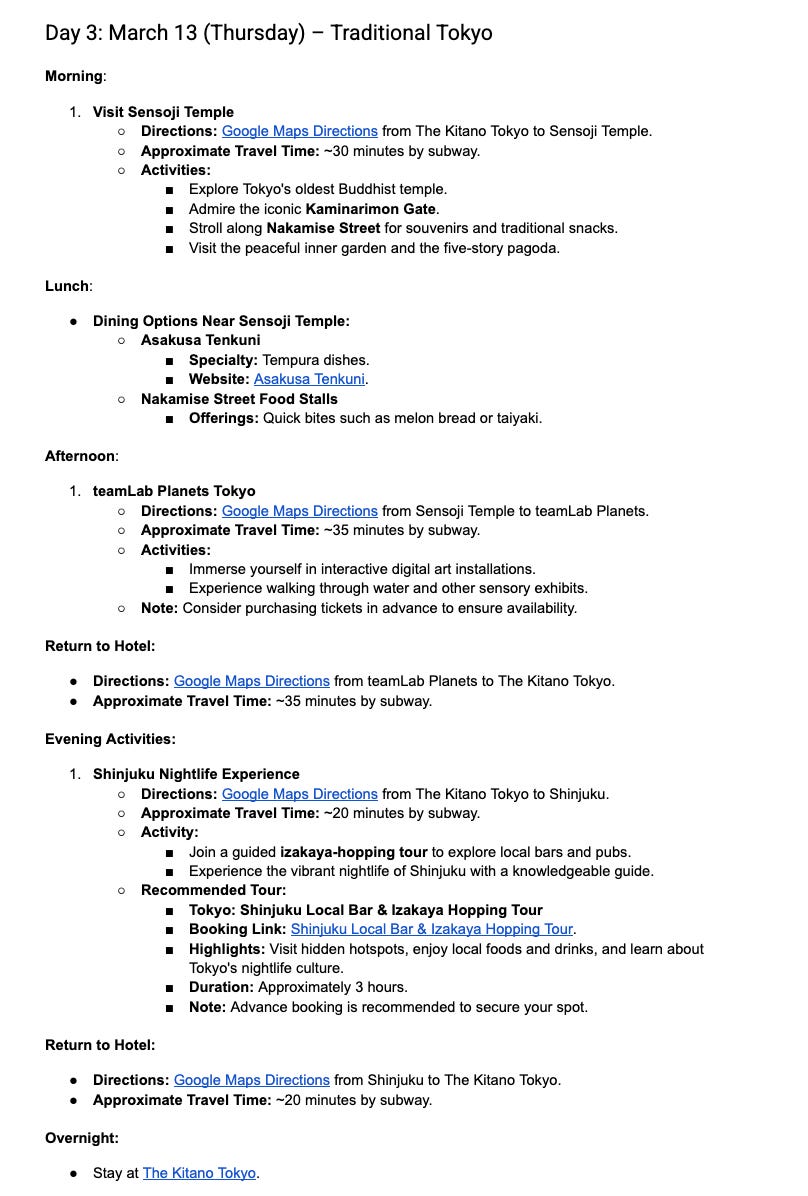AI Trip Planning: Helpful Assistant or Overconfident Intern?
Why AI Still Struggles to Replace Human Judgment in Travel Planning
AI is changing the way we do everything—including planning complex travel itineraries. So when my brother-in-law and his wife wanted to visit Japan, I decided to put ChatGPT to the test. Could it create a structured, logical, and well-balanced itinerary for a first-time trip to Japan? Short answer: Yes. But also, not without some serious babysitting.
The Good: AI as the Ultimate Trip Planner's Assistant
ChatGPT (GPT-4o specifically, using a Pro GPT account) did a great job of structuring the itinerary—grouping activities by geography, balancing heavy sightseeing with downtime, and even sequencing major travel legs. It even embedded Google Maps links for easy navigation, which was surprisingly useful.
For filling in gaps, I also loaded some publicly available itineraries into context, which helped it generate recommendations faster than I could Google them. That was a big win. Plus, GPT’s ability to iteratively modify plans—rearrange days, swap activities, adjust pacing—was a huge time-saver. No more manually copy-pasting in a spreadsheet for hours!
The Bad: AI Still Needs a Human Editor (Preferably One Who Knows Japan)
Here’s the thing—if I had zero knowledge of Japan, this itinerary would have been an absolute disaster. While GPT nailed the broad strokes, it also:
Got some basics completely wrong.
Missed important details that an experienced traveler would catch.
Suggested things that don’t actually work logistically (e.g., back-to-back activities that require impossible transit times).
It also struggled with preserving edits. Asking for a change in one section often resulted in weird modifications elsewhere—activities mysteriously moved around, some disappeared, and sometimes entire days got reshuffled even when I explicitly asked it not to. Eventually, I resorted to saving each finalized day as a static file and only reloading the whole itinerary when necessary.
The Ugly: Memory & Booking Limitations
One major limitation: GPT couldn’t edit more than a few days at a time before losing track of details. However, this appears to be specific to editing within the canvas feature and is likely a short-term problem.
And, of course, it doesn’t book anything. Hotel availability? Flight schedules? Forget it. You still need actual travel tools for that. Maybe one day AI will seamlessly integrate with booking systems, but we’re not there yet.
Verdict: Worth It?
Absolutely. Despite its quirks, using GPT made structuring and modifying a complex itinerary much easier. It eliminated the cold start problem and got me to 80% completeness in record time. The final 20%—sanity checks, verification, and fine-tuning—still required human effort, but that’s a much better use of time than staring at a blank document.
The Bigger Takeaway: Invest in Travel APIs, Not AI Itinerary Builders
This experiment reinforced a core belief: investing in full-fledged AI itinerary builders isn’t worth it. The moving parts are too many, and the gaps in AI’s capabilities (live availability, real-time pricing, logistical nuance) make it an uphill battle.
Here's one day in the itinerary we built (pasted as an image because LI's article editor wouldn't preserve Gdocs formatting):



